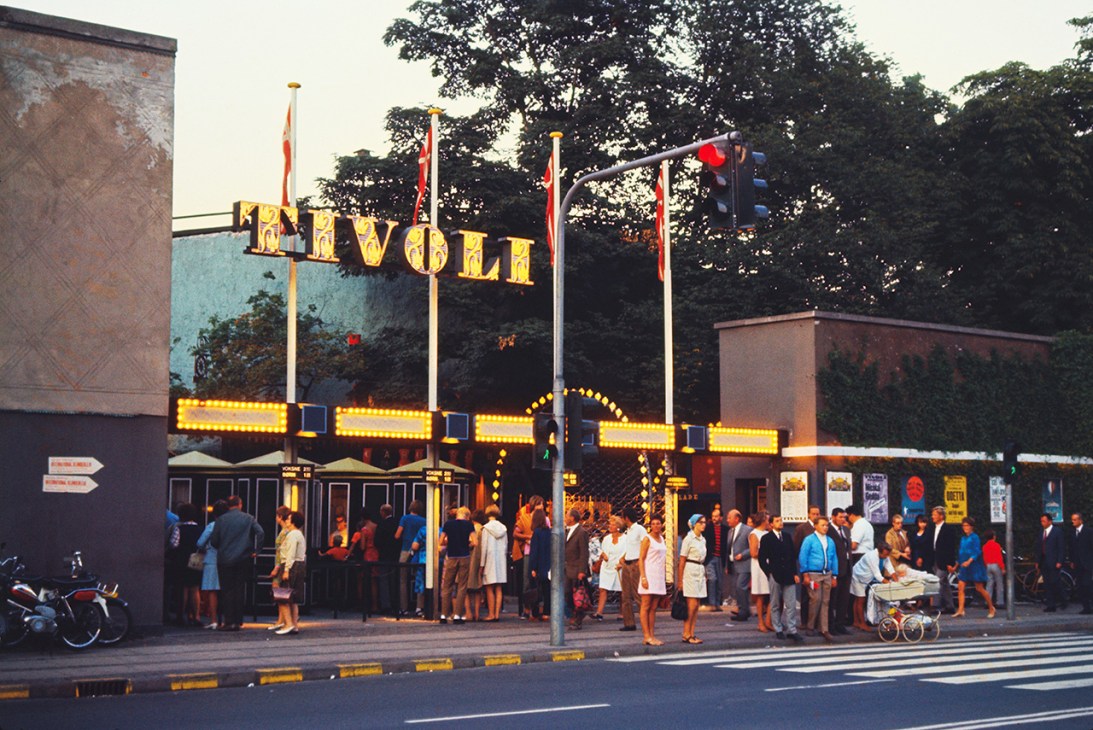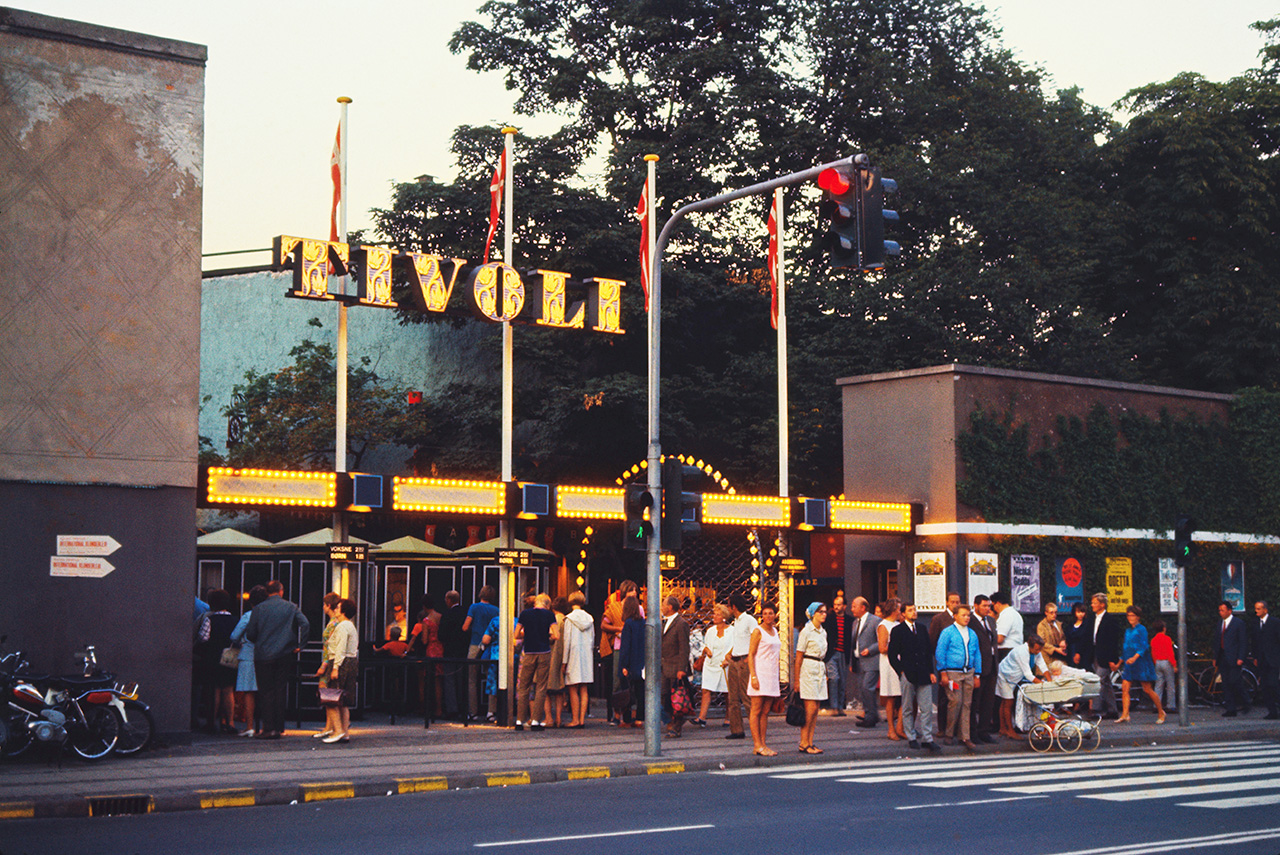When Tivoli Gardens opened its gates in central Copenhagen 182 years ago, one of the first people through the turnstiles was Hans Christian Andersen. Since then, this compact amusement park squeezed between the Central Station and City Hall has become more than just Denmark’s most popular visitor attraction, it’s a cultural landmark and a location for national celebration that holds a quasi-spiritual place in the heart of the Danes.
The park blends beer garden aesthetic with highbrow culture, live music, theatre, modern thrill rides and old-fashioned fairground stalls, all of which combine with its world-famous lighting to create a fairytale setting.
Tivoli’s history is a crucial element of its appeal – but as CEO Susanne Mørch Koch knows all too well, to compete in 2025’s attention economy you can’t coast on legacy alone. Her stint as leader began with a baptism of fire. She took over in August 2020 amid the Covid crisis, as a result of which the park lost millions of kroner in revenue. But after a rollercoaster start, Tivoli posted a record for visitor numbers and turnover in 2024.
Monocle meets Koch to find out more about how she has shepherded this cherished Danish brand from catastrophe to triumph, and about her plans for the future.

Tivoli seems to hold a special place in Danish hearts. What is its appeal?
Many of us carry childhood memories from Tivoli. My family didn’t have a lot of money when I was young, and looking back I now realise that my parents worked so hard and we didn’t have a lot of spare time together. But we would visit Tivoli every summer as a family, and it was something that I looked forward to for the whole week running up to it. I couldn’t sleep the night before. And that’s still true for kids today. My favourite ride was Galejen – just little boats running round in a circle but it’s quite a legacy ride today and always busy. It even has a special smell and feel. Now, I ride the old wooden rollercoaster most often.
Who is your competition? Are you vying with computer games, streaming services and social media to capture the imagination of children?
No, not really, because we are so different from that world. There has been pressure to gamify the park with apps – we had a suggestion for something a bit like Pokémon Go – but we have deliberately not done that. We are selling quality time and screens would get in the way of that. Of course, no one wants to stand in line and be bored, but we’re not afraid of people queuing a little: it’s where you can ground yourself, reflect on what you’ve just experienced and build anticipation. We see it as a benefit. Where apps can improve a visit, we use them – restaurant bookings, for instance – but we don’t want technology to be part of the show. And you don’t have to book a table, there’s always room for a little spontaneity.
Tivoli has iconic gates that seem to draw people in – how important is this exterior image?
The main entrance is crucial. It’s a magical place where we welcome and say goodbye to our guests, so there’s a lot of footfall. Throughout Tivoli there is an intentionality behind every detail. Rather than having things that shout for attention, it’s an accumulation of all the little things, such as the way that we use lighting, the planting and the sentiment of the people who work here.

How do you balance the history of Tivoli with a need to innovate?
When I started, people warned me that I risked provoking outrage by changing things. But I’m yet to experience that. Tivoli has always moved forward, it has never shied away from change. If it had done so, it would risk becoming a postcard version of itself – what use is a theme park with no thrill? From the start, my guideline has been that it has to make sense to the people who live just outside our walls. It’s not a typical amusement park that could be anywhere – with live entertainment and good food, we cater to more than tourists and day trippers.
What does the future hold for Tivoli?
There is still scope to grow visitor numbers, particularly in the shoulder seasons, spring and autumn. We are choosing to expand the Halloween season as the Norwegians have an earlier autumn vacation and we want to attract them. But there’s something huge ahead of next summer – we are redeveloping our street-like layout, with new rides and scenography. The budget is somewhere between DKK100-200 million (€13.4-26.8m) and it’ll feel like a real refresh.
Tivoli Gardens
Founded 1843
Open: Apr-Sept, Oct, mid-Nov-Early Jan
Location: Central Copenhagen
Total employees: high season 2,200+, low season 700-800
Turnover (2024): DKK1.32bn (€177m)
Visitors (2024): 4.25 million, of which 35 per cent are tourists
Ownership: Tivoli is listed on the Danish stock market but is majority owned by the Augustinus Fonden
Sustainability: Net zero by the end of 2025

